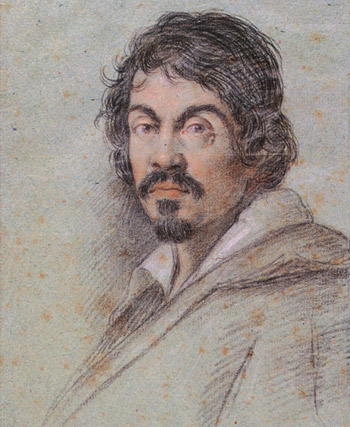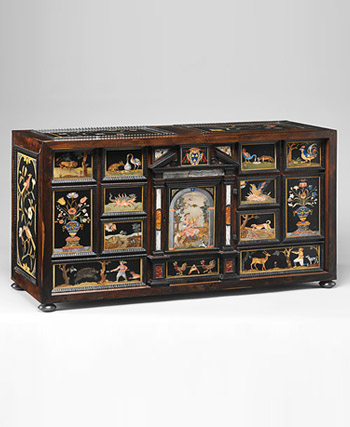The era shifts to the arts and literature of ancient Greece and Rome. Creativity and imagination bring achievements. Humanist scholars concerned about mankind are exalted. Painters begin to use worldly images in their work. Literacy among the secular world begins when the printing press is invented in Europe in the 15th century. North America is a beneficiary. See the recreated Gutenberg printing press at The International Printing Museum.
Caravaggio (1571 - 1610)is born Michelangelo Merisi, in Milan, Italy. Caravaggio is the name of a local village near Naples where the family moved to escape the Black plague that devastated his birthplace.
His dad is an architect and manages the affairs of the Marquis of Caravaggio with the privilege of living in the Nobleman’s household - but not for long. Seemingly, the young man becomes an orphan at an early age when his grandfather and dad die of the plague. Caravaggio’s mother sends him to live with an uncle for guidance.
Caravaggio begins an apprenticeship with a student of Titian. Before going off on his own, good fortune smiles when he happens to meet Cardinal del Monte a great patron and connoisseur. Del Monte purchases The Cardsharps, offers the painter guest quarters in his palace, and introductions to the elite stratum of Roman ecclesiastical society.
In a shocking turn of events, Caravaggio is accused of murdering someone in a brawl. He flees Rome and runs from authorities the rest of his life. Despite his troubles, the artist receives commissions from admirers who overlook them; nevertheless, he is mysteriously found dead on a beach.
Caravaggio is recognized as a pivotal figure for inspiring other painters to probe subject matter for the drama hidden in psychological relationships.

Baroque period Italian, Renaissance (c.1600 -1700) The Intellectual and political forces set in motion by the Renaissance and Counter-Reformation of the fifteenth and sixteenth centuries intensifies during the seventeenth century. Baroque art deliberately evokes intense responses from viewers.
The Cardsharps is not a religious painting; although, the Catholic Church recognizes Caravaggio's dramatic style will communicate religious themes beautifully. Consequently, he becomes one of their favorites. After Caravaggio’s death, artists who emulate his style are referred to as Caravaggesques. Many of these painters are accomplished in their own right, but they continue in this practice at least a decade.
This oak and poplar, veneered furniture, of exotic hardwoods; ebony moldings and plaques of marble; rock crystal; and various hard stones, exemplifies the elaborate, Italian Baroque style.
During the Baroque Period, Opera begins to flourish. Take a moment to listen here .
Go on to Describe, Analyze, Interpret & Conclude. Contact me for help.

The Cardsharps (c.1595. Oil on canvas. 37 x 52 in. (94 x 131 cm.) illustrates Caravaggio’s ability to create an atmosphere filled with palpable watchfulness between the small-time operators and their victim. The calm young man has no idea of their plan to empty his pockets.
Pay attention to the mood evoked by the facial expressions. Look at the eye of the standing figure. Observe the elegant clothing of the young man in contrast with those worn by the unscrupulous pair. Hide the feathers on the hats of the hustlers. Notice how the opposing directions add an extravagant gesture, the painting is not the same without them.
We are observing a fascinating, fictional incident. With each play of a card, Caravaggio alternates between the all too trusting seated figure, who relies on his cards to win, and the standing figures, who actually know the cards he is playing.
The Cardsharps is virtually unknown for some ninety years, only to surface again, in 1987, in a European private collection
Around the same time frame, this intriguing work gains ascension to the Kimbell Art Museum.